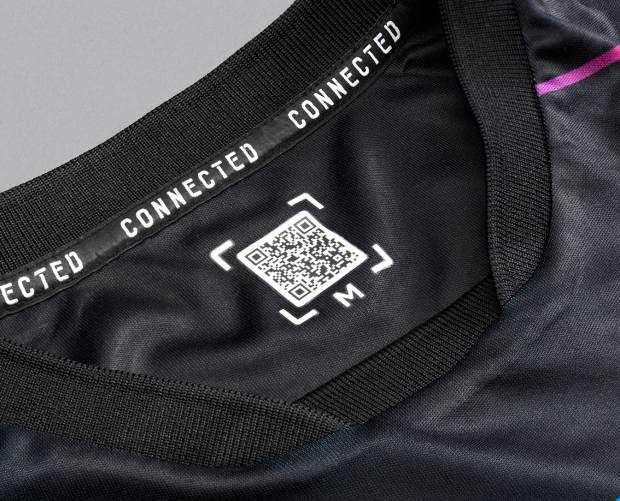Liora Bram, Segment Manager, Mobile Applications Marketing for NMS Communications, explains why mobile operators should use their customers previous purchases to target them with relevant mobile content offers
 It has long been recognised that the mobile phone is viewed as a fashion accessory and a statement of identity, as well as a communications device. A well-targeted mobile content offering, which enhances personalisation of the device, is likely to grow via viral marketing, as mobile users share the excitement of their latest movie clip or ringtone with their friends. But to tap into the burgeoning mobile content market, operators must develop compelling campaigns that offer the right content to the right audience.
It has long been recognised that the mobile phone is viewed as a fashion accessory and a statement of identity, as well as a communications device. A well-targeted mobile content offering, which enhances personalisation of the device, is likely to grow via viral marketing, as mobile users share the excitement of their latest movie clip or ringtone with their friends. But to tap into the burgeoning mobile content market, operators must develop compelling campaigns that offer the right content to the right audience.
The global market for mobile downloads is expected to top $9 billion (5.2 billion) within a year, a clear indication that the market is ripe for customer-savvy operators to capitalise on this growing mobile personalisation trend. Whether its the latest Eminem ringback tone, or Gorillaz wallpaper, operators are now in a position to offer customers a huge range of content services. But how can operators take a pro-active approach to offering content, by actively targeting subscribers with content tailored to their personal interests?
Too Many Choices?
Operators are sitting on a potential content goldmine. The next step is to let their customers know about it. What operators really need is some way of gaining an accurate insight into what content offers their subscribers would like to hear about.
Operators have visibility of a users purchasing history, presenting a real opportunity to offer relevant services, which are more likely to trigger additional content purchases. Leaving the customer to navigate the vast array of content on their own is akin to sending them to a shopping mall where none of the stores are labelled. This haphazard way of delivering content can result in less tenacious customers leaving portals empty-handed.
Using a model similar to that employed by Amazon, where other items are recommended, based on the purchasing profile of the online shopper, operators could undertake targeted marketing campaigns via SMS. Sending offers based on previous content purchases vastly increases the likelihood that the subscriber will firstly open the message and secondly, act upon it. A survey undertaken by IDC found that 74% of mobile owners would be open to receiving targeted content offers via SMS. The remainder of the survey sample agreed that they would be interested, as long as the service was free and not used too frequently.
Say for example, a subscriber has downloaded football highlights onto their phone. The operator could follow this up by sending them a bundled offer, which could include a free wallpaper of their teams coat of arms along with the ringtone of their teams chant. These offers could be timed to coincide with a big derby match or cup win.
Targeting Pre-Pay Customers
When one considers that the majority of pre-pay customers are in the pre-teen to early twenties age range - and that mobile content such as games, wall papers and ringtones find most appeal with this youth market - it is clear that operators need to find a way to adequately profile these users preferences in order to deliver the same targeted content marketing campaigns to them. However, because prepaid mobile users have no contract, the operators have little in the way of personal data to help manage the customer relationship and enable them to target this group with tailored content that will boost ARPU.
Analyst firm Yankee Group predicts that by 2008 prepaid mobile users will make up 57 percent of all mobile subscribers worldwide. This represents approximately 1.1 billion prepaid users - a huge segment of the market for mobile operators that are rolling out new content services. Therefore, developing a customer content relationship management strategy for prepaid customers is vital if prepaid numbers continue to rise.
While many operators still concentrate their marketing efforts on their contract customers, some European operators have tackled this problem by initiating campaigns to persuade prepaid customers to part with some personal data in return for an incentive - such as free MMS or entry into a prize draw. This boosts the information that they hold on their non-contract customer base.
Analysis of customer purchases of mobile content, along with other channels of communications with the operator - such as opt-in platforms - can also help marketers gauge which mobile content offerings are attractive to particular customer segments, enabling operators to rapidly analyse and respond with offers tailored to their customers real preferences.
Mining the Network
If purchased content was stored on the network rather than the handset, in principle, the operator would only need a number to be able to target future offers, so that pre-pay customers could benefit from the same targeted incentives. As users share the excitement of their new content, this tends to bolster the operators marketing effort with viral marketing among the user group.
This was recently demonstrated by a Korean operator, SK Telecom, which in 2002 introduced ringback tones whereby the user pays the operator to play their favourite music to their friends when they call. Within nine months of launching this novel service, SK Telecom had attracted six million users. Now, 25 Asian operators and a growing number of European operators offer ringback tones, with more than 75 million customers paying for the service.
Customers of SK telecom receive a targeted SMS with details of ringback tones that would be of particular interest. Once purchased, the piece of content is stored within the operators network, so should the subscribers phone be lost or stolen, the pieces of content are not lost with the phone. Instead, the content is accessible via the phones portal, or online. This not only offers a value-added service to the customer, but also takes control of content away from the handset manufacturers, who are not privy to the same customer information as the operator.
Conclusion
If operators are to take advantage of this particularly lucrative market, they need to begin thinking like retailers, and concentrate on getting to know exactly what their customers preferences are, and how best to offer content tailored to them. Amazon.com, which suggests books, music and games based on what readers have purchased in the past, has shown this to be a hugely successful strategy that has helped it to corner the online bookshop market. The future is promising for mobile operators that can emulate this strategy with truly personalised content campaigns.







